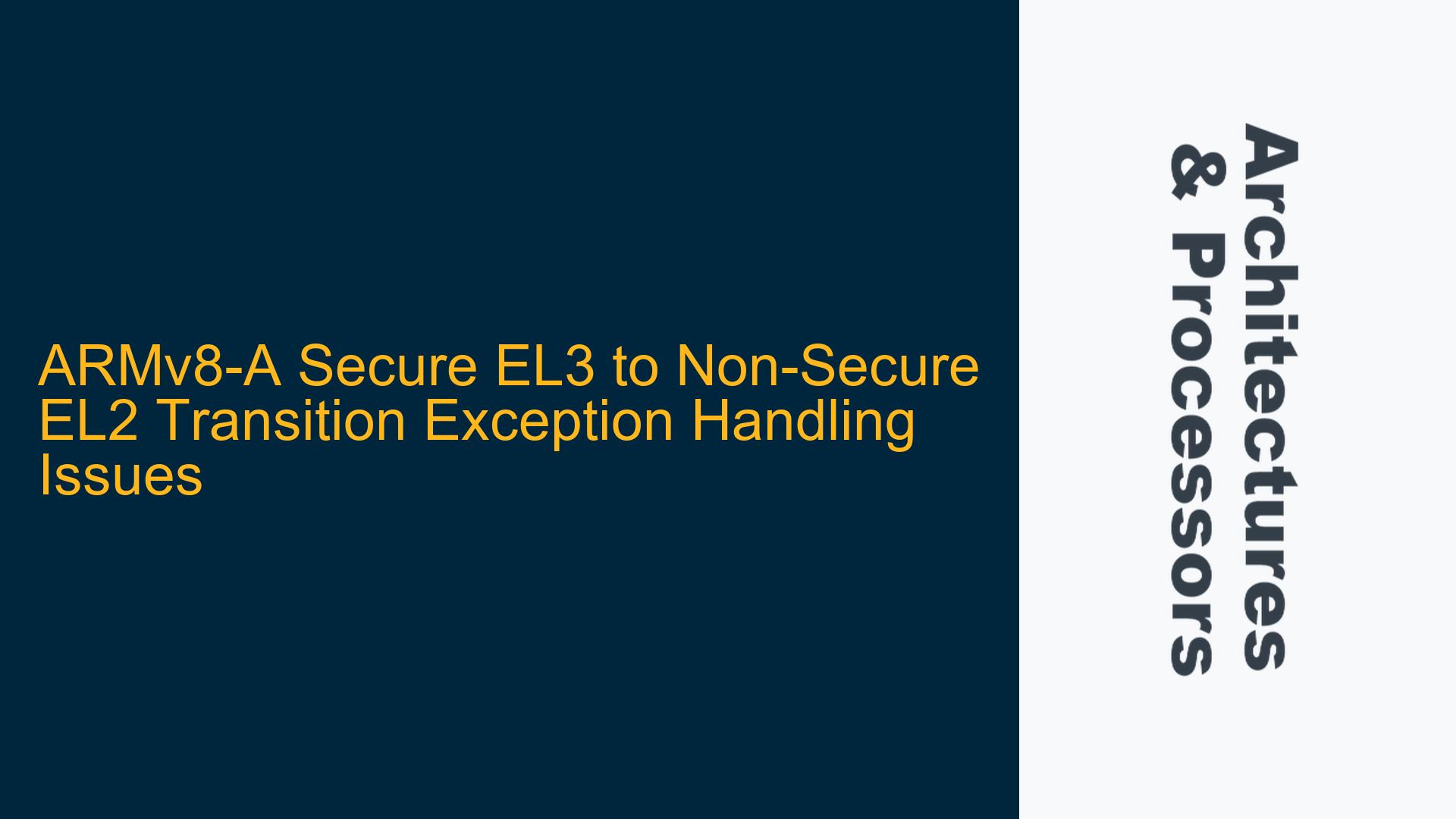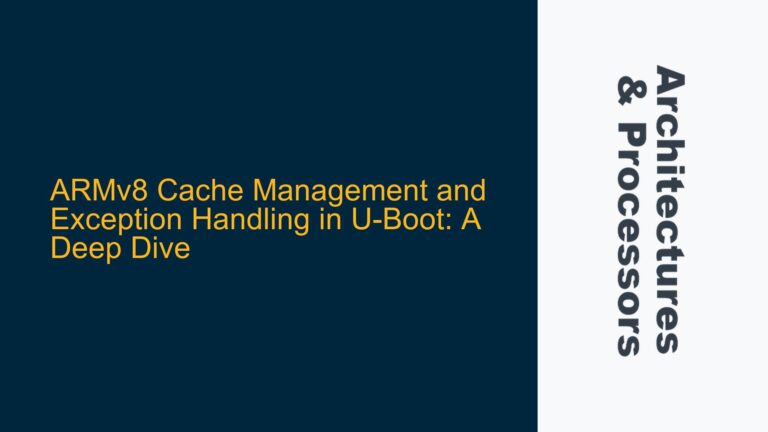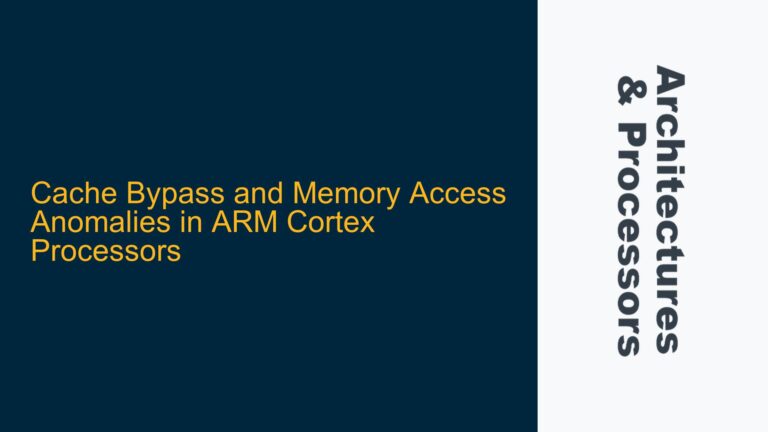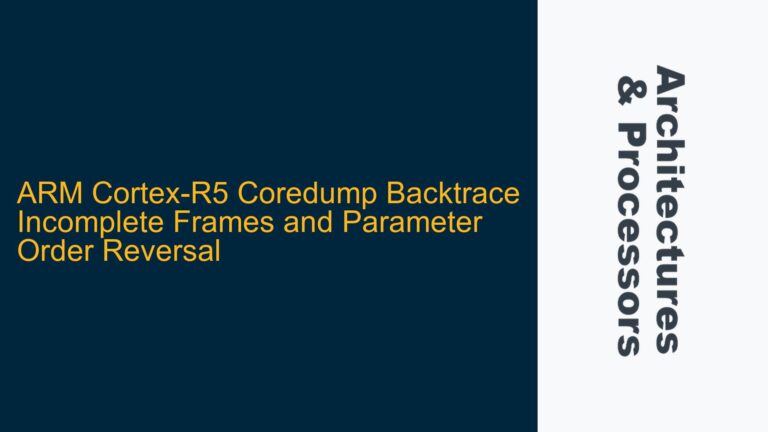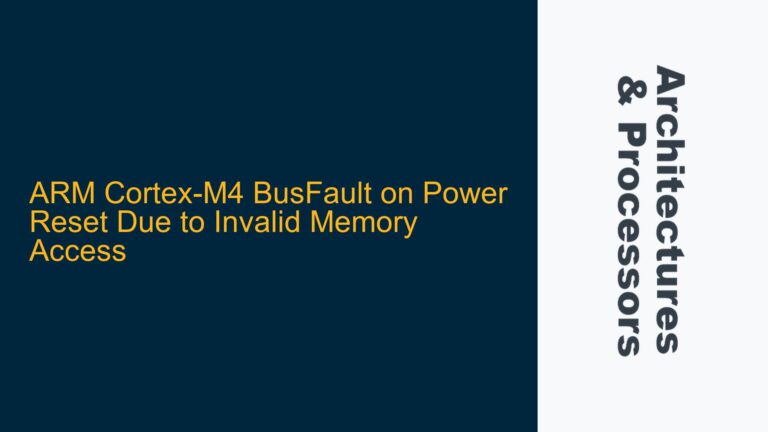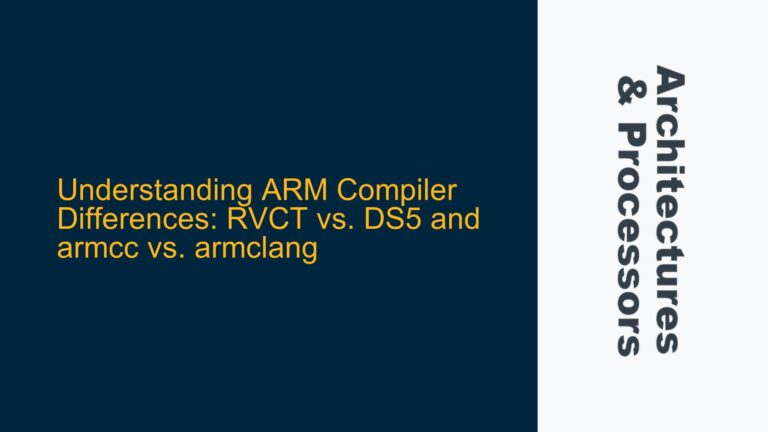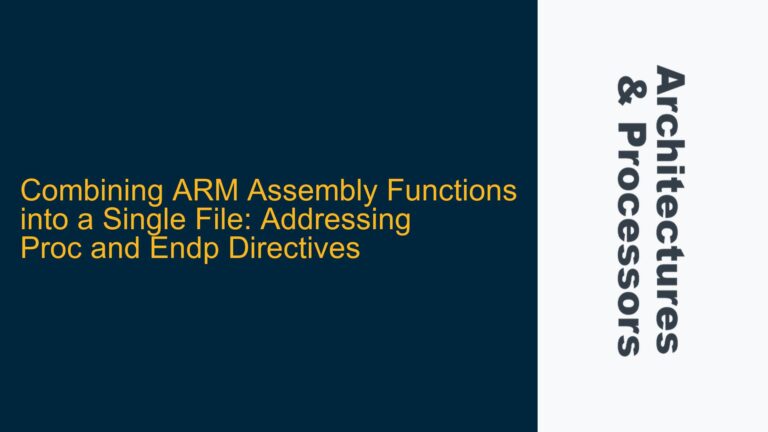ARMv8-A Secure EL3 to Non-Secure EL2 Transition Exception Handling Issues
Secure to Non-Secure State Transition and EL2 Entry Point Execution
The core issue revolves around the transition from Secure EL3 to Non-Secure EL2 in the ARMv8-A architecture, where the system encounters an unexpected exception immediately after executing the first instruction at the EL2 entry point. This behavior indicates a misconfiguration or oversight in the state transition process, which is critical for ensuring proper execution flow between exception levels.
When transitioning from Secure EL3 to Non-Secure EL2, the system must correctly configure several key registers and states to ensure a smooth handover. The primary components involved in this transition include the Secure Configuration Register (SCR_EL3), the Saved Program Status Register (SPSR_EL3), the Exception Link Register (ELR_EL3), and the Hypervisor Configuration Register (HCR_EL2). Additionally, the System Control Register for EL2 (SCTLR_EL2) and the Exception Syndrome Register (ESR_EL3) play crucial roles in diagnosing and resolving issues during this transition.
The problem manifests when the system attempts to execute the first instruction at the EL2 entry point, leading to an unexpected exception that forces a return to EL3. This suggests that the system is not correctly configured to handle the transition, resulting in an immediate fault. The root cause could be related to the execution state (AArch32 vs. AArch64), the security state (Secure vs. Non-Secure), or the memory management unit (MMU) configuration at EL2.
SCR_EL3 Configuration and Execution State Mismatch
One of the most common causes of this issue is a mismatch between the execution state configured in the SCR_EL3 register and the state specified in the SPSR_EL3 register. The SCR_EL3.RW bit determines whether lower exception levels (EL2 and EL1) operate in AArch64 or AArch32 mode. If this bit is not correctly set to match the execution state specified in SPSR_EL3, the system will encounter an exception when attempting to transition to EL2.
For example, if SCR_EL3.RW is set to 0 (indicating AArch32 mode) but SPSR_EL3 is configured for AArch64 execution, the system will fail to transition correctly, leading to an immediate exception. Similarly, if SCR_EL3.RW is set to 1 (AArch64 mode) but SPSR_EL3 is configured for AArch32 execution, the transition will also fail. This mismatch is a critical issue that must be addressed to ensure a successful transition.
Additionally, the SCR_EL3.NS bit must be set to 1 to indicate that the lower exception levels (EL2 and EL1) are in Non-Secure state. If this bit is not set, the system will remain in Secure state, preventing the transition to Non-Secure EL2. This is particularly important for ARMv8.0 and ARMv8.2-A processors, where EL2 only exists in Non-Secure state.
SCTLR_EL2 and HCR_EL2 Initialization and MMU Configuration
Another potential cause of the issue is improper initialization of the SCTLR_EL2 and HCR_EL2 registers. The SCTLR_EL2 register controls the MMU and caches for EL2, and it does not have a defined reset value. If this register is not initialized to a safe value before entering EL2, the system may encounter an exception due to an invalid MMU configuration.
A common practice is to initialize SCTLR_EL2 to 0, which disables the MMU and caches, providing a safe initial state. However, if the MMU is required for EL2 operation, it must be properly configured before enabling it. This includes setting up the translation tables, enabling the MMU, and configuring the memory attributes.
The HCR_EL2 register also plays a crucial role in the transition to EL2. This register controls various aspects of the hypervisor configuration, including the virtualization of exceptions, interrupts, and memory management. If HCR_EL2 is not correctly configured, the system may encounter exceptions or unexpected behavior when transitioning to EL2.
Diagnosing and Resolving Transition Issues with ESR_EL3 and ELR_EL3
To diagnose the issue, it is essential to examine the values of the Exception Syndrome Register (ESR_EL3) and the Exception Link Register (ELR_EL3) when the system returns to EL3. The ESR_EL3 register provides detailed information about the cause of the exception, including the exception class, instruction-specific syndrome, and fault status. This information is critical for identifying the root cause of the issue.
The ELR_EL3 register contains the address of the instruction that caused the exception. By comparing this address to the expected EL2 entry point, it is possible to determine whether the system is correctly transitioning to EL2 or encountering an issue before reaching the entry point. If the ELR_EL3 value does not match the expected EL2 entry point, it indicates a problem with the transition process.
Implementing Correct Transition Code and Debugging Steps
To resolve the issue, the following steps should be taken:
-
Verify SCR_EL3 Configuration: Ensure that the SCR_EL3.RW bit is correctly set to match the execution state specified in SPSR_EL3. Additionally, confirm that the SCR_EL3.NS bit is set to 1 to indicate Non-Secure state for lower exception levels.
-
Initialize SCTLR_EL2 and HCR_EL2: Before transitioning to EL2, initialize SCTLR_EL2 to a safe value (e.g., 0) to disable the MMU and caches. If the MMU is required, configure the translation tables and enable the MMU after the transition. Similarly, configure HCR_EL2 to enable the necessary hypervisor features.
-
Check EL2 Entry Point Address: Ensure that the address specified in ELR_EL3 matches the expected EL2 entry point. If the address is incorrect, verify the code that sets ELR_EL3 and ensure that it points to the correct location.
-
Examine ESR_EL3 and ELR_EL3 Values: When the system returns to EL3, examine the values of ESR_EL3 and ELR_EL3 to diagnose the cause of the exception. Use this information to identify and resolve any configuration issues.
-
Implement Data Synchronization Barriers: Use data synchronization barriers (DSB) and instruction synchronization barriers (ISB) to ensure that all register changes are correctly applied before executing the ERET instruction. This prevents any potential race conditions or inconsistencies in the system state.
-
Debugging with Breakpoints and Traces: Use breakpoints and trace tools to monitor the execution flow and identify any unexpected behavior. This can help pinpoint the exact location and cause of the issue.
By following these steps, it is possible to diagnose and resolve the issues related to the transition from Secure EL3 to Non-Secure EL2 in the ARMv8-A architecture. Proper configuration of the SCR_EL3, SCTLR_EL2, and HCR_EL2 registers, along with careful examination of the ESR_EL3 and ELR_EL3 values, is essential for ensuring a successful transition and avoiding unexpected exceptions.
